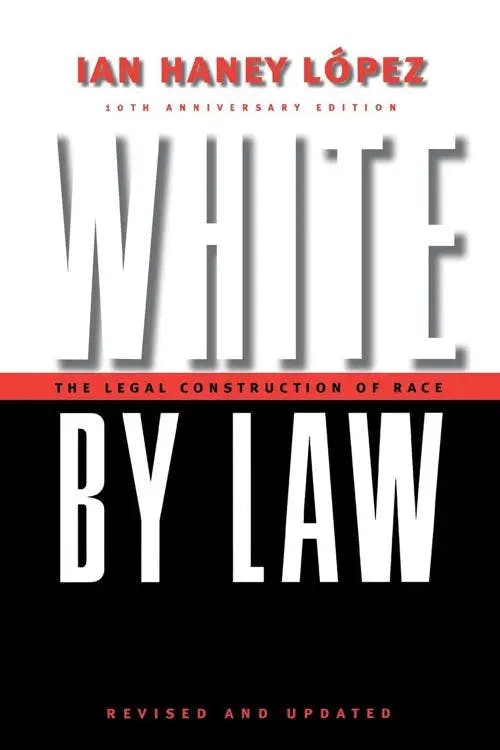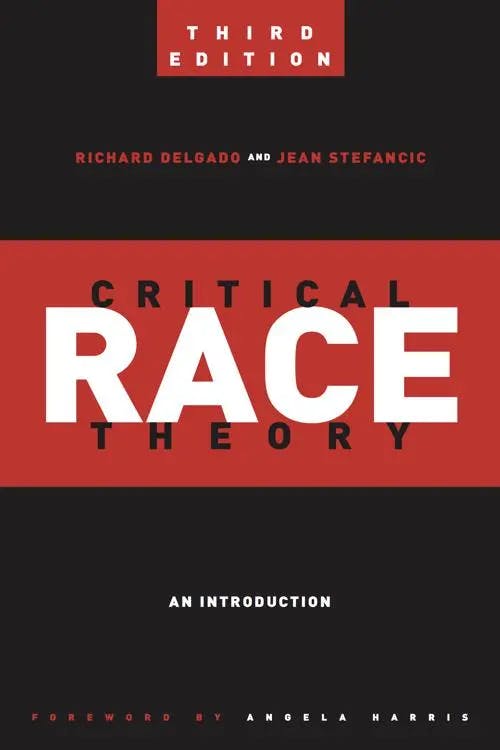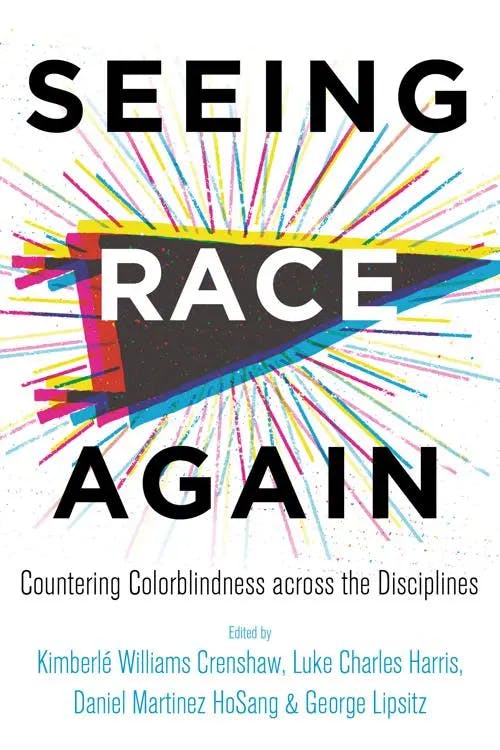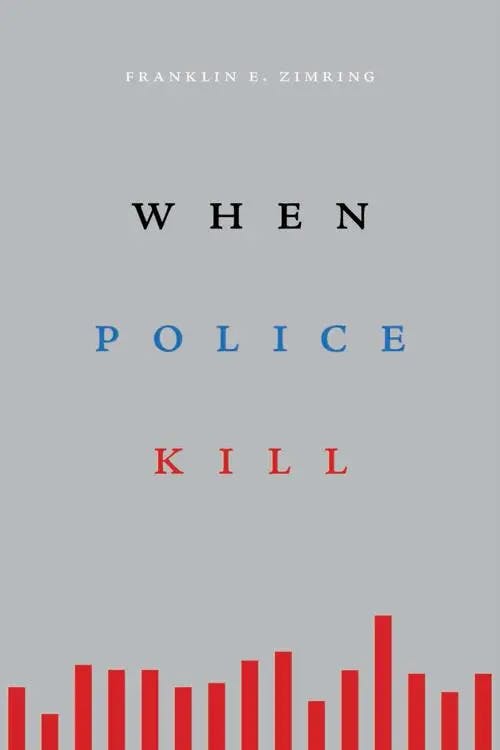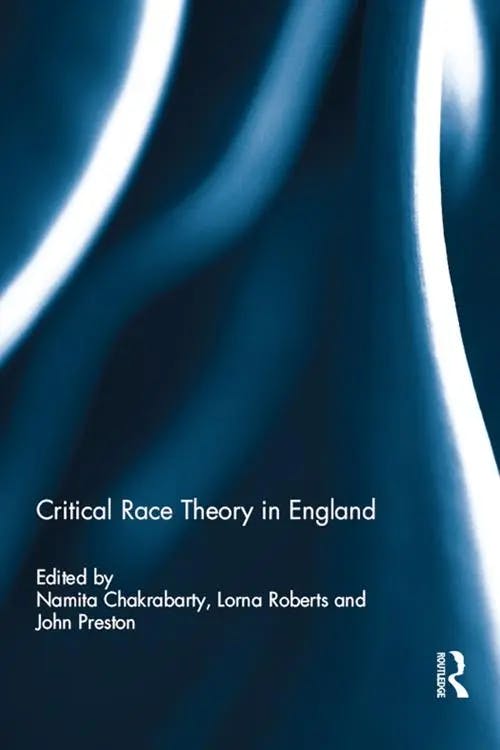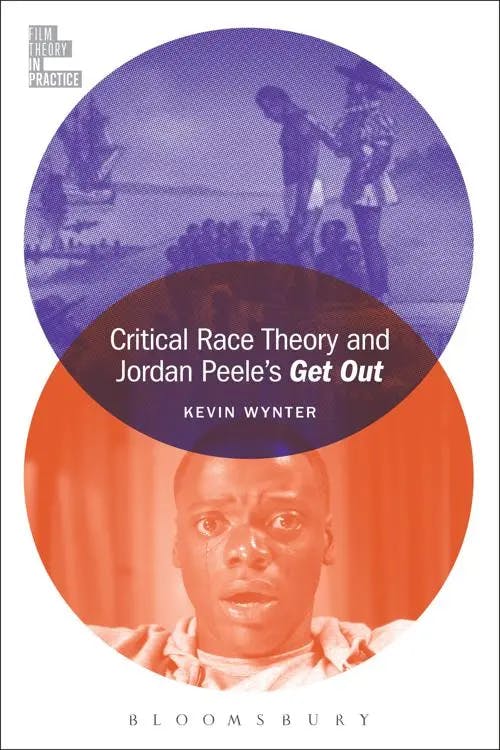What is Critical Race Theory (CRT)?
MA, Gender Studies (London School of Economics & Political Science)
Date Published: 08.03.2023,
Last Updated: 10.01.2024
Share this article
Definition and meaning
Critical Race Theory, or CRT, is a framework theorized and employed by activists and scholars. It understands race as socially constructed, and racism as systemic. For Critical Race theorists, racism is more than individual prejudices or actions; racism is structurally embedded in laws, policies, and institutions. CRT posits that in order to eliminate racism, we must address structural forms of oppression that exacerbate or operate beyond the scope of personal biases. CRT originated in the United States in order to analyze the ways racism has historically been woven into the country’s legal institutions and continues to permeate society today — affecting the justice system, education, employment, housing, healthcare, and more.
Ultimately, CRT means that prejudices embedded in social systems are the causes of sociological, political, and economic disparities between White and non-White people, who continue to be disadvantaged in terms of income, legal protections, rights, and social positioning.
Origins and importance
Critical Race Theory developed in the 1970s, when the advances made during the US Civil Rights Era were beginning to stall and be rolled back. Scholars, lawyers, and activists like Derrick Bell, Alan Freeman, and Richard Delgado understood the need to develop a new way of describing the depth, complexity, and pervasiveness of racism in the US.
CRT was first formally recognised as a theory in the late 1990s in the work of prominent American legal scholars Delgado and Jean Stefancic. In Critical Race Theory: Past, Present and Future (1998), Delgado and Stefancic credit Bell, the first Black scholar to teach at Harvard Law School, with the origins of this scholarly movement. During Bell’s generation,
traditional methods such as litigation, exhortation, and marching were yielding fewer and fewer gains. New approaches were necessary to cope with the less sympathetic public and the more nuanced forms of racism that were developing.
Although CRT responded to developments in its current moment, laws upholding racism are as old as the US. Early Critical Race theorists still held fresh in their minds a century of Jim Crow — a collection of strict laws stretching from the Civil War until 1968 that denied Black Americans the right to vote, restricted their movement, and prevented certain educational and employment opportunities.
In White by Law: The Legal Construction of Race (1996, [2006]), Ian Haney López narrates how race itself is constructed in part by law. López writes,
legislatures and courts have served not only to fix the boundaries of race in the forms we recognize today, but also to define the content of racial identities and to specify their relative privilege or disadvantage in U.S. society. [...] The operation of law does far more than merely legalize race; it defines as well the spectrum of domination and subordination that constitutes race relations. (1996, [2006])
Ian Haney Lopez
legislatures and courts have served not only to fix the boundaries of race in the forms we recognize today, but also to define the content of racial identities and to specify their relative privilege or disadvantage in U.S. society. [...] The operation of law does far more than merely legalize race; it defines as well the spectrum of domination and subordination that constitutes race relations. (1996, [2006])
By looking closely at how race and racism are institutionalized, Critical Race theorists examine how racism pervades in the law; even when obviously racist legal allowances of segregation and miscegenation were overturned (in Brown v. Board of Education [1954] and Loving v. Virginia [1967], respectively), their impacts and the deeper structures of racism in US institutions remained.
In Critical Race Theory: An Introduction (Third Edition) (2017), Delgado and Stefancic position CRT as interested in the same issues as conventional civil rights discourses, but CRT tackles these issues with “a broader perspective that includes economics, history, setting, group and self-interest, and emotions and the unconscious.” Delgado and Stefancic write,
Unlike traditional civil rights discourse, which stresses incrementalism and step-by-step progress, critical race theory questions the very foundations of the liberal order, including equality theory, legal reasoning, Enlightenment rationalism, and neutral principles of constitutional law. (2017)
Richard Delgado, Jean Stefancic
Unlike traditional civil rights discourse, which stresses incrementalism and step-by-step progress, critical race theory questions the very foundations of the liberal order, including equality theory, legal reasoning, Enlightenment rationalism, and neutral principles of constitutional law. (2017)
CRT enables us to reconsider what racism really looks like, encouraging us to look beyond individual actions and to question systems taken for granted as “neutral” or unbiased, like the law. With CRT as a lens, patterns of racist behavior — for example, how Black men in the US routinely receive longer sentencing than White men when on trial for the same charges — can be identified and contextualized. CRT sees racism in law enforcement as more than the actions of a few individuals and instead embedded in a broader system which collectively perpetuates inequality.
CRT also attends to subtler forms of racism, such as microaggressions, “small acts of racism, consciously or unconsciously perpetrated, welling up from the assumptions about racial matters most of us absorb from the cultural heritage in which we come of age in the United States” (Delgado and Stefancic, 2017). Delgado and Stefancic discuss academics not citing Black scholars when writing about racism as an example of how subtler or nuanced forms of bias manifest.
Key writers and theorists in the field
Beyond the writings of Derrick Bell, one cannot speak on Critical Race Theory without crediting Richard Delgado’s work. His writing on the subject now spans two decades and he has continually updated his work to account for evolving social climates and significant events and developments, such as the Black Lives Matter movement. In Critical Race Theory, Delgado and Stefancic credit a number of theorists with contributing to the foundation and development of Critical Race Theory; notably Kimberlé Williams Crenshaw, the scholar who coined the term ‘intersectionality’.
Crenshaw herself writes on Critical Race Theory in Seeing Race Again, edited by Crenshaw, Luke Charles Harris, Daniel Martinez HoSang, and George Lipsitz. In her chapter “Unmasking Colorblindness in the Law,” Crenshaw positions CRT as a response to “colorblindness,” or the claim to not see race. She argues that by invoking colorblindness,
institutional actors from across the political spectrum embraced a gradualist strategy of integration premised on the assumption that colorblind meritocracy stood outside the economy of racial power. (Crenshaw, 2019)
edited by Kimberlé Williams Crenshaw, Luke Charles Harris, Daniel Martinez HoSang, and George Lipsitz
institutional actors from across the political spectrum embraced a gradualist strategy of integration premised on the assumption that colorblind meritocracy stood outside the economy of racial power. (Crenshaw, 2019)
As an alternative, CRT was “the embodiment of a race-conscious and justice-oriented intellectual project within and outside the institutional spaces of the discipline” (Crenshaw, 2019).
Another key contributor to CRT is feminist legal scholar Angela Harris. Her exploration of the intersections of race, gender, and class was foundational in formulating a CRT that accounted for the impact of gendered and socioeconomic divides. For more on this subject and Harris’s contributions to CRT, see Presumed Incompetent: The Intersections for Race and Class for Women in Academia. Delgado & Stefancic also credit multiple earlier thinkers with laying the foundations for CRT including Jacques Derrida, Sojourner Truth, and W.E.B. Du Bois; selected relevant texts from these scholars available on Perlego are linked in the additional resources section below.
What are the key principles of Critical Race Theory?
Most Critical Race theorists believe in the following key tenets:
- Race is socially constructed, not naturally or biologically determined.
- Racism is ordinary. It is the standard, everyday experience of most people of color in the US.
- Structures of racism serve to benefit the dominant group. This idea is sometimes called “interest convergence” or material determinism: “Because racism advances the interests of both white elites (materially) and working-class whites (psychically), large segments of society have little incentive to eradicate it” (Delgado and Stefancic, 2017). Even what seem like advancements for racial equality may actually support the interests of those in power.
- Each race undergoes a process of “differential racialization.” Races develop with their own origins and histories, and assumptions and popular images surrounding minority groups change over time based on shifting needs of the dominant group.
- CRT embraces Intersectionality, or Intersectional Feminist Theory. Each person’s identity exists at the convergence of various systems of power such as race, gender, sexuality, and socioeconomic status. No one has a single, static, or unitary identity; “[e]veryone has potentially conflicting, overlapping identities, loyalties, and allegiances” (Delgado and Stefancic, 2017).
- CRT also intersects with the “voice of color” movement. This concept means that members of a particular group have an “authority” when talking about experiences related to that group. Individuals cannot be neutral on subjects such as racism because of the impact of their own lived experiences. People of color have a level of “authority” when speaking about racism derived from lived experience. When applying CRT, firsthand accounts of racism are considered some of the most valuable assets in understanding racist power structures (Leonardo, 2013). The “voice of color” movement is related to Standpoint Epistemology, a philosophical concept incorporated after Patricia Hill Collins’ writing on the value of the Black feminist standpoint (see Black Sexual Politics: African Americans, Gender and the New Racism).
What does it mean that race is socially constructed?
One of the major misconceptions surrounding Critical Race Theory arises from the idea that race is a social construct. This idea can be misinterpreted as an argument that race is not “real.” In order to understand how CRT conceives of race, we must establish the difference between the argument that race is a social construct and the argument that race is not real.
Social constructs are defined as “[a]bstract concepts which are constructed to explicate (describe, explain) and measure many facts of human life” (Saeedi, 2008). To order the world around us, we use many socially and culturally constructed concepts. For example, how we measure time is socially constructed. Time passes — but how it passes and how much is passing has been defined by us, humans. A minute of time is an arbitrary measure — we decided that sixty seconds accumulate to one minute. This doesn’t mean that time isn’t real, but that we have assigned value to it to make it something we can understand and talk about.
Race as a social construct is the same. Race is grounded in facets of ethnicity, heritage, and cultural practices, but these are also concepts we have developed to make sense of the world around us and the people in it. Race exists, but what it means and how it is defined has been constructed, socially, by people.
CRT originated with a particular interest in how race is constructed legally. López’s White by Law specifically explores the construction of Whiteness in the US’s legal system, while Kenneth R. Aslakson explores how race was constructed differently by free Black Louisianans in Making Race in the Courtroom (2014). For more on the concept of ‘Whiteness’ we recommend Richard Dyer’s book White (1997, [2017]).
Delgado and Stefancic emphasize how “races are categories that society invents, manipulates, or retires when convenient” and how the physical traits often associated with a person’s race (i.e. skin color, hair texture) are “only an extremely small portion of their genetic endowment” (2017). CRT is interested in analyzing the value assigned to these traits and the ways the categories of race form and shift.
George Floyd, Black Lives Matter, and CRT post-2020
Critical Race Theory received increasing attention following the murder of George Floyd. On May 25, 2020, Floyd, a 46-year-old Black man, was arrested by the Minneapolis Police Department after a store clerk alleged that Floyd made a purchase with a counterfeit $20 bill. Officer Derek Chauvin, a 44-year-old White man, knelt on Floyd’s neck for over nine minutes while he was handcuffed and lying face-down in the street, ultimately resulting in Floyd’s death by suffocation.
Floyd’s death sparked a surge of protests and international attention in the Black Lives Matter movement — originally founded in 2013 after the acquittal of the officer who killed the unarmed Black teenager Trayvon Martin. According to their website, the mission of #BlackLivesMatter, or BLM, is to “eradicate white supremacy and build local power to intervene in violence inflicted on Black communities by the state and vigilantes.” In referencing “State-sanctioned violence” and the “systemic” targeting of Black lives, BLM engages with the principles of Critical Race Theory.
Floyd’s murder provoked international discussion about police violence and brutality. Drawing upon CRT, many activists pointed to Chauvin’s actions as evidence of a broader system of racist policing practices. Calls for police reform or to “defund the police” see institutional change as the only way to create a less racist society.
Franklin E. Zimring’s When Police Kill (2017) offers an in-depth look at the use of deadly force by police officers in the US. Using a data set from the Guardian, Zimring finds,
There are two identity groups in the U.S. population that are over-represented in the police killings distribution. The largest population group with outsized death tolls is “Blacks/African Americans,” who account for 12.2 percent of the 2010 census population but 26.1 percent of all killings by police in service calls and patrol. The death rate for Blacks/African Americans per population is 2.3 times the White non-Hispanic rate and 2.13 times the Guardian-based Hispanic/Latino rate.
Two smaller groups in the population, Native Americans and Asian Pacific Islanders, compose only 1.1 percent of the 2010 census population but 2.1 percent of the Guardian list of police killings.
Franklin E. Zimring
There are two identity groups in the U.S. population that are over-represented in the police killings distribution. The largest population group with outsized death tolls is “Blacks/African Americans,” who account for 12.2 percent of the 2010 census population but 26.1 percent of all killings by police in service calls and patrol. The death rate for Blacks/African Americans per population is 2.3 times the White non-Hispanic rate and 2.13 times the Guardian-based Hispanic/Latino rate.
Two smaller groups in the population, Native Americans and Asian Pacific Islanders, compose only 1.1 percent of the 2010 census population but 2.1 percent of the Guardian list of police killings.
Critical Race theorists and activists would argue that these numbers are a result of systemic racism in policing.
Through coverage of the BLM movement in 2020, discussions of “systemic racism” and other ideas associated with CRT moved into mainstream media, attracting criticism from conservatives. An interview on Fox News between conservative scholar Christopher F. Rufo and host Tucker Carlson in September 2020 led to Rufo describing Critical Race Theory as a form of “cult indoctrination” that is “weaponized against the American people.” This interview has been associated with the subsequent explosion of media attention on CRT.
Critical Race Theory in Education
Donald Trump and other conservative leaders targeted CRT as an anti-American fiction promoted by the radical left, claiming that CRT indoctrinated children and led to racism against White people. As calls for education on race and anti-racist training increased after the events of 2020, CRT was presented as responsible, leading to a wave of US legislation banning CRT in schools; these anti-CRT laws have passed in at least seven states. These bills often do not mention CRT by name, and instead ban the discussion of the US as inherently racist and broader discussions of unconscious or conscious bias, privilege, or discrimination. The content affected by these bills stretches beyond discussions of race to include conversations about gender and sexuality.
Efforts to ban teaching CRT are often accompanied by several misconceptions about CRT. First, CRT as a theory is simply the acknowledgement that racism in the US is a structural issue. CRT does not necessarily advocate specific actions to combat this problem. Proponents of CRT may advocate for educational reforms or increased anti-racist training, and CRT may inform how educators address race in their classrooms, but the “when” and “how” of education about racism is beyond the scope of CRT.
Second, opponents of CRT argue that increased education about racial inequality results in racism against White people or perpetuates racial division. Rather than attacking all White people as intentionally racist oppressors, CRT actually seeks to understand the systems already in place that promote racism even when actors have the best intentions, proposing a more nuanced understanding of how racism works. Acknowledging racism is not, itself, racist.
Third, although bans on CRT target public primary and secondary schools, CRT is currently largely taught at the university level. However, anti-CRT bans are not ineffectual. Discussions of racism and bias do appear in public school curricula, particularly in history classes. How can racially-motivated state actions — like the Trail of Tears, Jim Crow laws, Japanese internment — be discussed without at least touching on foundational elements of CRT? Advocates against these bans argue that they inhibit a teacher’s ability to accurately inform students about race, gender, and sexuality, resulting in a whitewashed version of history.
Critical Race Theory examples outside the US
Although CRT originated in the US, its approach to race and racism can be applied to other contexts. A strong example is Critical Race Theory in England (2016), edited by Namita Chakrabarty, Lorna Roberts, and John Preston. The contributors to this collection address how CRT functions in the UK. As the editors write in their introduction,
In some senses there is little difference between CRT as practiced in England and the United States (perhaps because of the prevalence of structural racism in both countries) but in other ways the differences are evident whether that is to do with different histories or European theoretical inflections. (2016)
edited by Namita Chakrabarty, Lorna Roberts & John Preston
In some senses there is little difference between CRT as practiced in England and the United States (perhaps because of the prevalence of structural racism in both countries) but in other ways the differences are evident whether that is to do with different histories or European theoretical inflections. (2016)
The collection addresses the different historical and intellectual positions of CRT in the UK versus the US and applies CRT to the contexts of British academia, the British working class, and the experiences of British Muslims. While addressing the specificities of the English context, the collection also considers the ways racism stretches beyond national borders. Nina Rollock’s article on the education system “considers the reality that racism is endemic, global and micro as well as macro-political” (Chakrabarty, Roberts, and Preston, 2016). Meanwhile, Kevin Hylton argues that “CRT is more than an ‘application’ of theory, or method, but rather a political positioning which involves the researcher in either transformational work or, ultimately, complicity” (Chakrabarty, Roberts, and Preston, 2016).
CRT ultimately shows that systems of power provide advantages and disadvantages to different racial groups. Its approach to the construction of race and institutionalization of racism is a perspective that can be applied in other contexts with different racial dynamics.
The future of Critical Race Theory
Critical Race Theory remains an intellectually and politically relevant field of inquiry. CRT and its tenets are tied to many current issues and events, from anti-CRT bans to the Black Lives Matter movement, from institutional efforts to recognize complicity in racism (like The Guardian’s exploration into its founders connections with slavery) to debates over the names of buildings and placements of monuments.
Although initially developed with a focus on US legal institutions, academics and activists have been applying CRT to different countries and disciplinary contexts. For example, Kevin Wynter combines CRT, film studies, and reception studies in Critical Race Theory and Jordan Peele’s Get Out (2022). Wynter writes,
The goal is to show not only how these disciplines mutually inform one another, but that together they provide a valuable methodology for opening dialogue on issues of race and representation, interrogating ways Blackness has and continues to be depicted on screen, and calling attention to the kinds of plotlines, story arcs, and tropes commonly associated with Black characters in horror films. (2022)
Kevin Wynter
The goal is to show not only how these disciplines mutually inform one another, but that together they provide a valuable methodology for opening dialogue on issues of race and representation, interrogating ways Blackness has and continues to be depicted on screen, and calling attention to the kinds of plotlines, story arcs, and tropes commonly associated with Black characters in horror films. (2022)
Wynter argues that combining these disciplines allows for “the modification of theoretical concepts in ways that would not be possible” otherwise; questions of spectatorship and identification take on different valences when focused on Black experiences, and critical race theory can be visualized and performed impactfully through narrative filmmaking (2022).
Critical Race Theory invites us to look at the bigger picture. It tasks us with seeing beyond the trends of inequality often blamed on innate differences between groups based on race. It presents the systems of our world as socially constructed such that, regardless of personal skill, ambition, or determination, individuals from some racial backgrounds will always be denied particular resources, freedoms, or support. CRT challenges the notion of individual neutrality or “colorblindness” by seeing racism as structurally pervasive, not reliant on individual bias. As much as the mainstream media treats this theory as radical, CRT merely stipulates that racism has influence and power within many social systems designed by people — people who, based on their own backgrounds, will fundamentally lack impartiality. Critical Race Theory was and remains a powerful device for social critique and an invaluable framework for ethical research and impactful social activism.
Further Critical Race Theory resources & reading on Perlego
Postcolonial Whiteness: A Critical Reader on Race and Empire – Alfred J. Lopez
Crossroads, Directions, and A New Critical Race Theory — Francisco Valdes
The Construction of Whiteness: An Interdisciplinary Analysis of Race Formation and the Meaning of a White Identity — Stephen Middleton, David R. Roediger, Donald M. Shaffer (eds.)
White — Richard Dyer
The Racialised Social System – Ali Meghji
On Cosmopolitanism and Forgiveness – Jacques Derrida
The Narrative of Sojourner Truth – Sojourner Truth
The Souls of Black Folk – W.E.B. Dubois
What is Critical Race Theory in simple terms?
Who are the key writers on Critical Race Theory?
Why is Critical Race Theory Important?
What are the five key principles of Critical Race Theory?
Bibliography
Aslakson, K. (2014) Making Race in the Courtroom. NYU Press. Available at: https://www.perlego.com/book/720388/making-race-in-the-courtroom-the-legal-construction-of-three-races-in-early-new-orleans-pdf.
Black Lives Matter. About. Available at: https://blacklivesmatter.com/about/.
Chakrabarty, N., Roberts, L., & Preston, J. (eds.) (2016) Critical Race Theory in England. Taylor and Francis. Available at: https://www.perlego.com/book/1640189/critical-race-theory-in-england-pdf.
Collins, P. H. (2004) Black Sexual Politics. Taylor and Francis. Available at: https://www.perlego.com/book/1619652/black-sexual-politics-african-americans-gender-and-the-new-racism-pdf.
Crenshaw, K. W. (2019) “Unmasking Colorblindness in the Law: Lessons from the Formation of Critical Race Theory,” in Crenshaw, K. W., Harris, L.C., HoSang, D. M., and Lipitz, G. (eds.) Seeing Race Again. University of California Press. Available at: https://www.perlego.com/book/866636/seeing-race-again-countering-colorblindness-across-the-disciplines-pdf.
Delgado, R., & Stefancic, J. (1998) “Critical Race Theory: Past, Present, and Future,” Current Legal Problems, 51(1), pp. 467–491.
Delgado, R., & Stefancic, J. (2017) Critical Race Theory: An Introduction. 3rd edition. NYU Press. Available at: https://www.perlego.com/book/719732/critical-race-theory-third-edition-an-introduction-pdf.
Leonardo, Z. (2013). The story of schooling: Critical race theory and the educational racial contract. Discourse: Studies in the cultural politics of education, 34(4), 599-610.
López, I. H. (1996, [2006]) White By Law. 10th anniversary ed. NYU Press. Available at: https://www.perlego.com/book/720829/white-by-law-10th-anniversary-edition-the-legal-construction-of-race-pdf.
Mohdin, A. (2023) “The Guardian and slavery: what did the research find and what happens next?,” The Guardian, 28 March. Available at: https://www.theguardian.com/news/2023/mar/28/the-guardian-and-slavery-what-did-the-research-find-and-what-happens-next.
Muhs, G. G., Niemann, Y. F., Gonzalez, G. G., and Harris, A. P. (eds.) (2012) Presumed Incompetent. Utah State University Press. Available at: https://www.perlego.com/book/2031424/presumed-incompetent-the-intersections-of-race-and-class-for-women-in-academia-pdf.
Saeedi, M. (2018) “Historical-Comparative Research on Social Constructs: A Methodological Point with a Historical Example,” Social History Studies, 8(2), pp. 1–17.
The Heritage Foundation. (2020) “Critical Race Theory Has Infiltrated the Federal Government | Christopher Rufo on Fox News.” Available at: https://www.youtube.com/watch?v=rBXRdWflV7M.
Wynter, K. (2022) Critical Race Theory and Jordan Peele’s Get Out. Bloomsbury. Available at: https://www.perlego.com/book/3570289/critical-race-theory-and-jordan-peeles-get-out-pdf.
United States Sentencing Commission (2017) Demographic Differences in Sentencing. Available at: https://www.ussc.gov/research/research-reports/demographic-differences-sentencing.
MA, Gender Studies (London School of Economics & Political Science)
Georgie Williams is a deferred doctoral student in the field of Social Justice at University College Dublin and founder of gender & sexuality research hub, /Queer. Georgie’s research predominantly focuses on the development of gender and sexuality related social practices in post-colonial countries and the application of reflexive feminist methodologies to anthropological and sociological field research.

